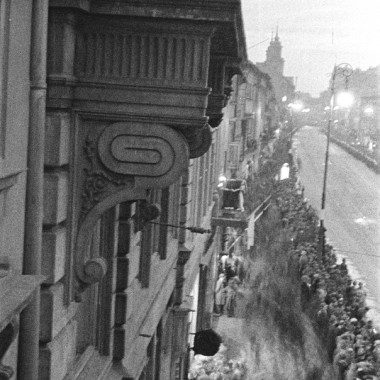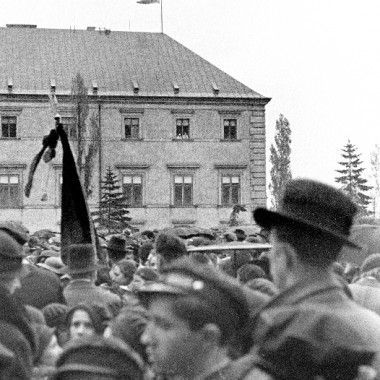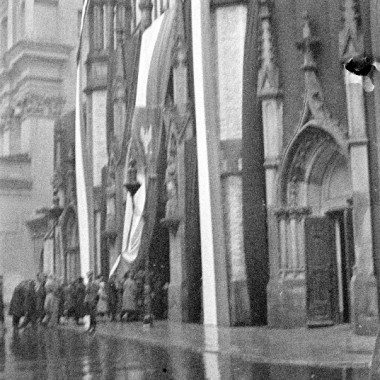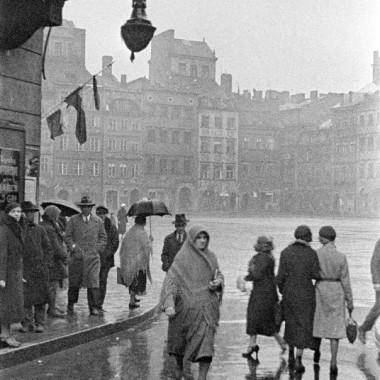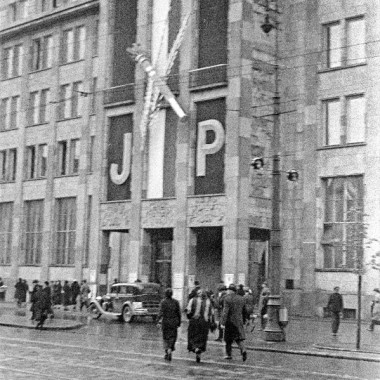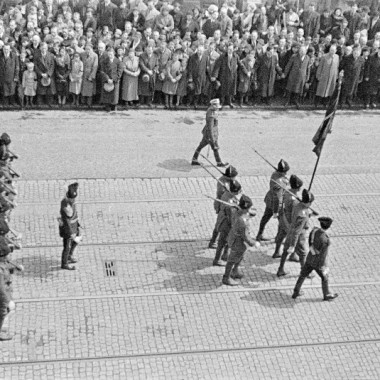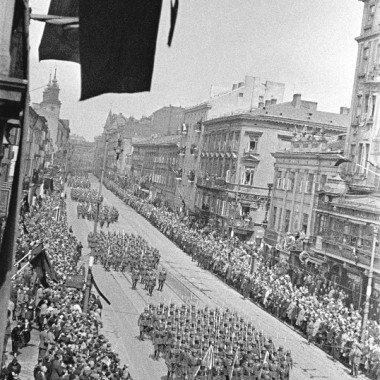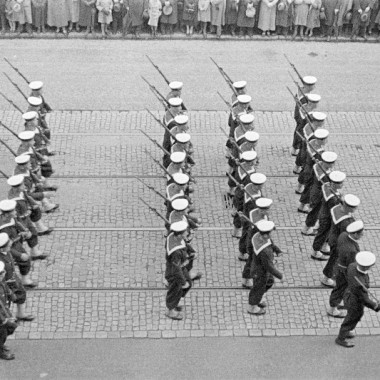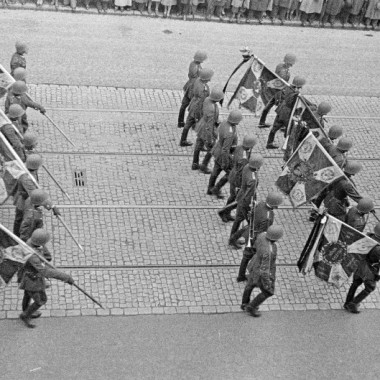Tadeusz Bukowski was born on 22 April 1909 in Warsaw. At the age of 19, he took up work as a teacher, but photography had been his greatest passion from the beginning. He ran school photo classes, and his involvement in the Scouting movement was also connected with photography. In 1927, he became a member of the Polish Photography Association. In 1939, he married Halina Glińska. Actively taking part in the underground during the occupation, he prepared photographic documentation of wartime destruction and realities, as well as movements of German troops. A soldier of the "Wigry" Battalion during the Warsaw Rising, he meticulously documented the fights as well as insurgent realities. Captured on 12 September, he left Warsaw among civilians after the capitulation. After the war, he and his wife lived in Mokotów. In 1946, Halina died. Beginning in 1948, Bukowski, now the widower, worked as a photo reporter, and later the head of the Photography Department at the Publishing Institute "Nasza Księgarnia". He was checked in great detail by the communist authorities. In 1958, he was nominated an artist of the prestigious International Federation of Photographic Art. He managed to organise his first individual exhibition of photographs from the Rising only in 1979. He died a year later in Warsaw. On 18 January 1981, after his death, the Kordegarda Gallery opened an exhibition arranged according to his design and tiled Warszawa trzydziestych lat (Warsaw of the 1930s).
A testament to his excellent photographic skills and sensitivity, as well as profound love of the city in which he grew up, fought and to which he returned after the war, Bukowski's photos of the 1930s Warsaw depict the Polish capital as a vibrant and proud city. They show both solemn events and everyday life of Warsaw. That chapter ends with an ominous accent - the digging of air raid trenches, heralding a new era in the city's history. This is followed by photos taken during the occupation: from first damaged buildings to the hasty evacuation of the city by the Germans in late July 1944. Then, there are insurgent photographs, in which Bukowski paid equal attention to recording the scenes of insurgent preparations and combat, and to everyday life of fighting Warsaw. The last chapter includes post-war photos – an account of the destruction, but also a city where the will to live defeated the wartime trauma.





